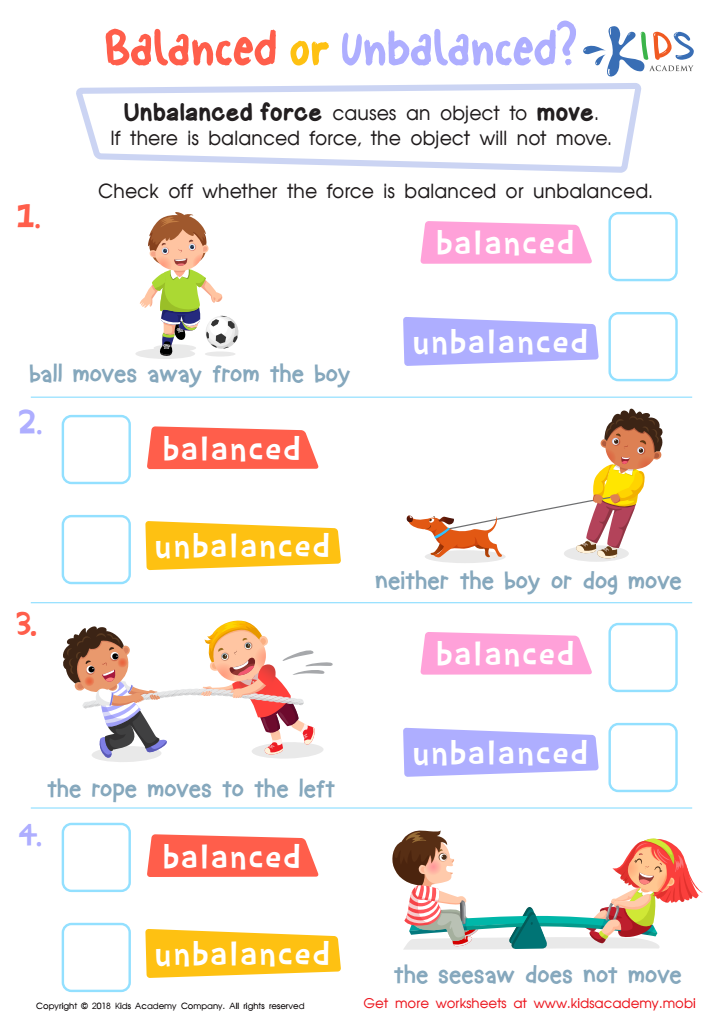Distinguishing balance/unbalance Worksheets for Kids
1 filtered results
-
From - To


Balanced or Unbalanced Science Worksheet
Question/Answer
How to test a Grade 3 student’s Distinguishing balance/unbalance skills?
To test a Grade 3 student's ability to distinguish between balance and unbalance, present them with various physical setups or images, such as seesaws with different weights on each side, unevenly loaded scales, or stacked objects. Ask them to identify which setups are balanced and which are unbalanced, explaining the reason for their choices.
How does the mastery of the Distinguishing balance/unbalance skill affect a student's performance at an early age?
Mastering the Distinguishing balance/unbalance skill at an early age significantly enhances a student's physical coordination and spatial awareness. It lays a foundation for more complex motor skills, promotes cognitive development by understanding symmetry and asymmetry, and boosts confidence in physical activities. This skill is crucial for academic and social success, influencing performance in sports, dance, and everyday tasks.
What does the Distinguishing balance/unbalance skill mean when it comes to Grade 3 Physical Science learning?
In the context of Grade 3 Physical Science learning, the skill of distinguishing balance/unbalance refers to the ability of students to understand and identify whether an object or system is in a state of balance (stable, not tipping or falling over) or unbalance (likely to tip over or collapse), demonstrating an early understanding of stability and equilibrium principles.
 Assign to the classroom
Assign to the classroom










